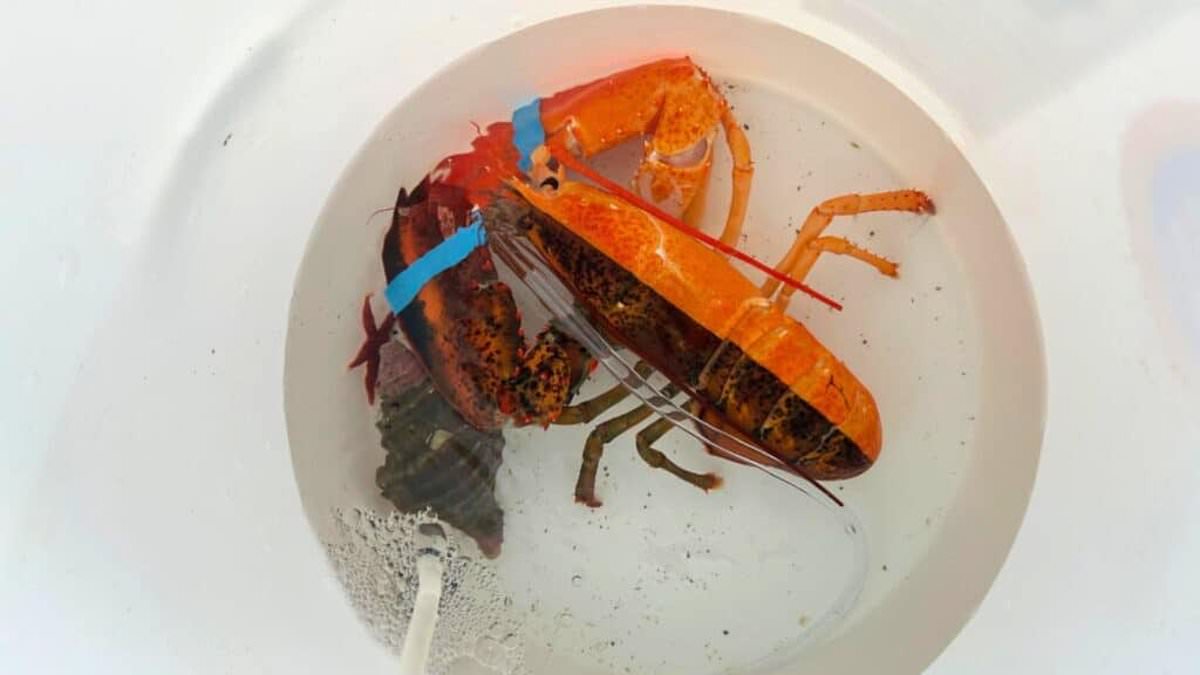On Christmas Eve, the Shaw Institute, based in Blue Hill, celebrated the arrival of a rare aquatic marvel: a split-colored lobster named Arnold Clawmer.
Arnold, the first inhabitant of the institute’s new touch tank, has a fascinating story.
His journey began at a Shop and Save in Milbridge, Maine, where a sympathetic customer noticed the unique lobster and decided to donate him to a marine learning center.
Before finding his forever home in Blue Hill, Arnold spent time acclimating to touch tank life at the Bar Harbor Oceanarium.
Arnold’s distinct split-color mutation, which occurs in only 1 in 50 million lobsters, results from the fusion of two fertilized eggs during development.
While rare, split-colored lobsters are not the most uncommon pigmentation.
Albino and cotton candy lobsters are far rarer, appearing only 1 in 100 million, while orange and yellow lobsters are 1 in 30 million, red lobsters 1 in 10 million, and blue lobsters 1 in 2 million, according to Seacoast Science Center.
Just last year, another unique lobster made headlines: a gynandromorph, or dual-sex lobster, discovered by Maine lobsterman Jacob Knowles.
Named Bowie—after David Bowie’s iconic gender-defying style—the lobster’s body is split down the middle, showcasing one side in vibrant blue and the other in brownish-orange, with each side displaying distinct male and female anatomy.
Bowie’s condition, known as gynandromorphy, results from a genetic anomaly during early embryonic development, causing male and female tissues to coexist.
This phenomenon, distinct from intersexuality, creates a mosaic of male and female traits, evident in Bowie’s swimmerets — small swimming legs near the tail.
While hermaphroditism is common in some crustaceans, lobsters generally have distinct male and female anatomies.
Gynandromorphy, however, has been observed in fossilized crustaceans dating back 70 million years.
Though statistics often claim split-colored lobsters like Bowie occur in 1 in 50 million, experts, including the Lobster Institute, caution that these numbers might need updating.
According to the institute’s former executive director, split-colored lobsters, while rare, are spotted annually.
Bowie was nearly destined for the dinner table, as Maine law allows lobstermen to keep and sell lobsters of legal size.
Thankfully, Knowles chose to preserve this extraordinary creature, relocating Bowie to the Bar Harbor Oceanarium for safekeeping after a storm threatened its safety.
Like Arnold Clawmer, Bowie now enjoys a second chance at life, captivating visitors and marine enthusiasts alike with its rarity.
